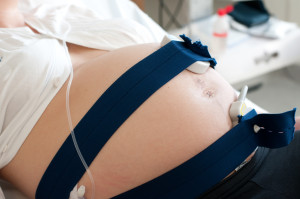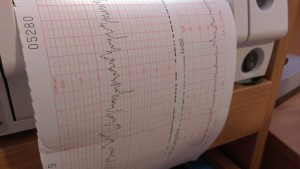The Low Down on Fetal Monitoring
What do you know about fetal monitoring? If you have taken our Birth Boutique prenatal classes, you know all there is to know. For many others, your knowledge may be limited to the sometimes-scary information to be found on Google. Fetal monitoring is not meant to be scary, and information is power. The more you know, the more comfortable you will be asking questions or following the recommendations of your care provider.
The first thing to know is that everyone will have some form of monitoring during pregnancy and labour. Fetal monitoring is how the doctor, nurse, or midwife listens to your baby’s heart rate. Knowing how your baby is tolerating pregnancy, labour, and specifically contractions, is important information for your medical team. It will influence their recommendations throughout the course of your labour.
The next thing to be aware of are your options for types of fetal monitoring:
Fetascope
A fetascope is a much more traditional method of fetal monitoring. Have you ever watched Call the Midwife? This is what they used! This method does not rely on sonographic technology, but does require the care provider to have excellent hearing. This method is most often used by midwives.
External Fetal Monitor
An external fetal monitor is a small, hockey-puck sized monitor held to your belly with a stretchy belt. It can be wired (attached to the monitor), or wireless (also called a”telemetry unit”). As you or your baby moves, the monitor may lose contact with the heart rate and need to be adjusted.
Uterine Contraction Monitor
The same size as the external fetal monitor, this monitor records the length and peak of your contractions.
Intra-Uterine Pressure Catheter (IUPC)
This is a small catheter that is inserted in your vagina, past your cervix, and into the uterus. It monitors not only the length and pattern of your contractions but also the intensity. It is not a common form of monitoring in the GTA. When it is used, it is a painless procedure which most people do not feel, it is usually inserted during a cervical exam.
Internal Fetal Monitor
This is a small electrode that is inserted vaginally and attached to baby’s scalp. It does not hurt baby, but may leave a small mark after birth. This is most commonly used when baby is very active and they are not seeing a consistent record from an external monitor.
Lastly, it is important to be aware of the differences in when fetal monitoring is done:
Intermittent monitoring/Doppler
In an uncomplicated and unmedicated birth, intermittent monitoring is common. This is the type of monitoring used most often by midwives and at home births. It is the same Doppler, or Fetoscope, used during your prenatal appointments during pregnancy.
 Continuous Monitoring
Continuous Monitoring
Continuous monitoring is when fetal monitoring continues throughout the entirety of labour. It is only removed as baby is crowing or after the baby has been born. Continuous monitoring is used when other interventions have taken place such as synthetic oxytocin use or an epidural. It is also used in cases of multiples, or for complicated pregnancies. Continuous monitoring may also be used if intermittent monitoring is concerning and your care provider would like more information.
Regardless of what type of monitoring you choose or is recommended, it is for the health and safety of both you and your baby. And while they are occasionally annoying or inconvenient, monitoring is not painful for you or your child.
